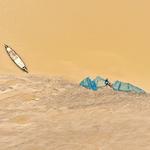Climate change, refugee reception and adaptation on the European borderland
This project explores how climate-related disasters and extreme weather influence refugee reception, local livelihoods, and host-refugee dynamics on the Greek island of Lesvos. Like many Mediterranean islands, Lesvos is vulnerable to the effects of climate change, but this has so far not been a key priority for local authorities nor for researchers studying refugees or humanitarianism.
In recent summers, Lesvos has faced extreme heat waves and wildfires, which experts link to climate change. A related problem is access to sufficient water of good quality. Asylum seekers on the islands are adversely exposed to these events due to their lack of adequate shelter and limited access to state and social protection. The planned opening of Vastria, a new camp located in an isolated pine forest, threatens to magnify the problems, but is currently halted by local resistance from environmentalists and refugee activists.
Climate-related extreme weather and disasters also impact Greek lives and livelihoods on the island, including tourism and olive oil production. By integrating local citizens’ experiences and concerns, the project identifies both shared struggles and frictions and contributes to further de-exceptionalise refugees and displacement.

Programme



